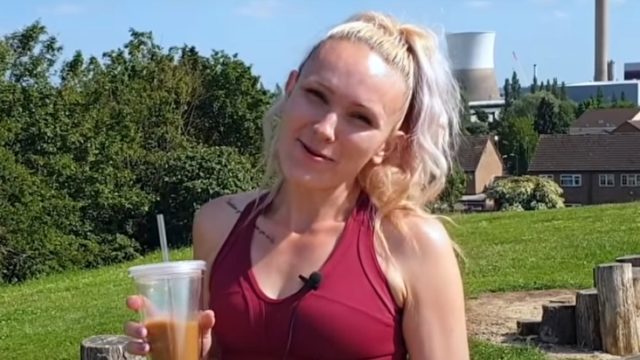I Lost 120 Pounds in a Year by Walking. Here's How Many Steps You Need to Do to Lose.
Do you want to lose over 100 pounds – one step at a time? Louise (@LouisesJourneyxo) is a weight loss warrior and influencer who lost a whopping 120 pounds and completely transformed her body. In her many viral videos, she details exactly how she did it via natural methods, including changing her approach to diet and exercise. In one of them, she reveals her go-to workout, walking, and offers tips on how to lose weight with the workout. "Today I'm gonna be telling you exactly why walking is one of the best exercises for weight loss and exactly how you can get started in walking, how walking has actually benefited me, and how many steps you should actually get a day to lose weight," she says.
Walking Is Low Impact, So You Can Do It Longer Than Running
One reason why "walking is one of the best exercises is because it's a low impact cardio instead of running, which you might not be able to do for a longer period of time, most people can't," she says. "You can do it for a long time, so you can actually burn more calories than you can run in because you just can't run for that period of time."
It's Easy on Your Joints
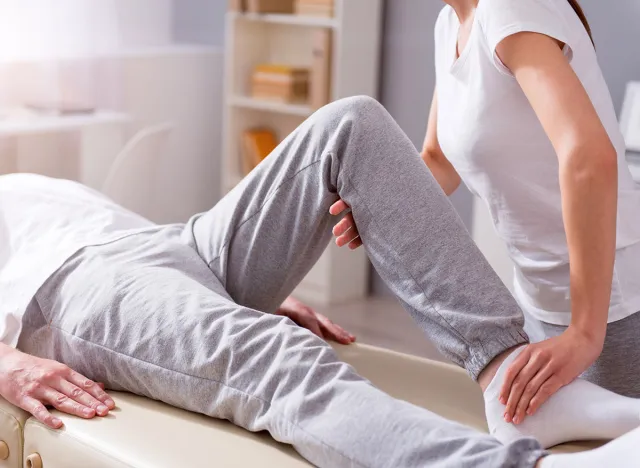
"It's also really good on your joints," Louise says. "For example, when you are really overweight, you don't wanna be doing jumping movements or anything like that. It puts too much pressure on your joints. You can injure yourself. You can damage your knees."
It Promotes Heart Health
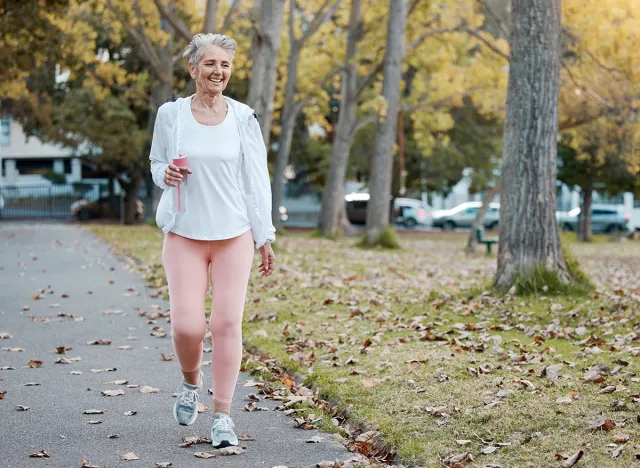
Other health benefits include cardiovascular. It also "helps improve your cardiovascular health, helps you control diabetes and your cholesterol," she says.
It's Easy and Convenient
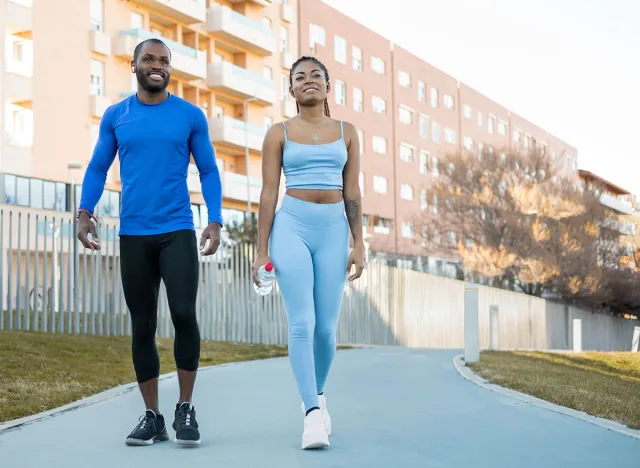
Another reason walking is great? "It's easy and one of the most convenient exercises to do," she says. Even if you have kids, you can take them to the park and walk around.
RELATED: 4 Simple Truths to Stay Fit in Your 50s
Tip 1: Gradually Increase Activity
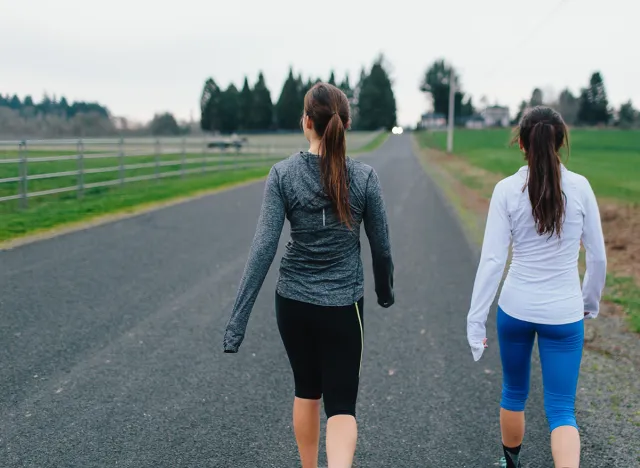
Louise recommends starting small and working your way up. She admits that when she was obese and first started, she could only walk for five to 10 minutes. "If you gradually increase your activity, increase the amount of walking you do, you can get there," she says. "Now I can walk for basically ever. I feel like I can literally walk forever. I don't need to stop. Very rarely do I need to sit down or anything. I can probably do about 20,000 steps about actually feeling tired, which is pretty amazing. And that has been within a year."
Tip 2: Track Your Steps
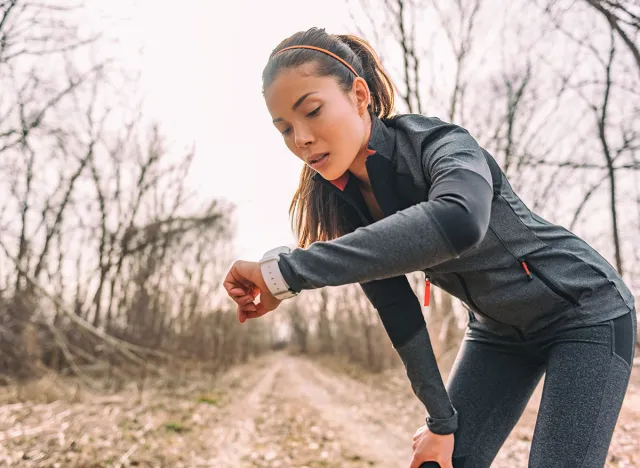
She also recommends using a fitness tracker. "A few months into my losing weight, I decided to get a Fitbit just to track my steps and actually see how active I am and how many steps I'm getting a day. And that really, really did encourage me to increase my activity and go for walks," she says.
Tip 3: Don't Be Discouraged
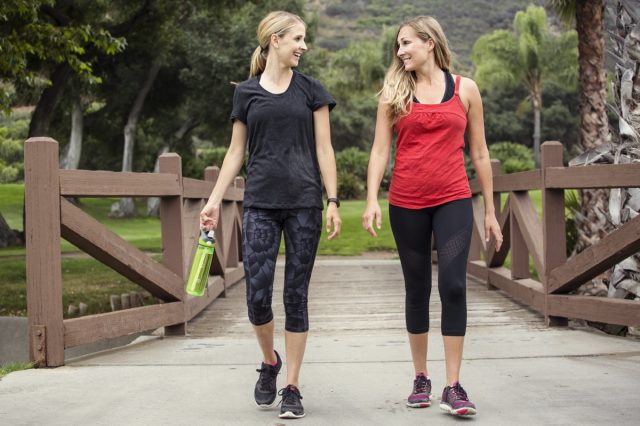
While most experts recommend walking 10,000 steps a day, don't be discouraged. However, keep working toward your goal. "Don't be discouraged by thinking that you have to get to 10,000 steps a day because you don't. If you are someone who doesn't even get a thousand steps a day, you can't expect to then aim for 10,000 steps a day. It's just not sustainable. It's not realistic for you. What is important is just increasing your steps by a little bit. So what you can do is you can get a fitness tracker to help you know, track your steps, see how many steps you are getting a day, and then just increase it."
RELATED: Jillian Michaels Reveals the Secret to Blasting Belly Fat
Tip 4: Aim to Walk Daily
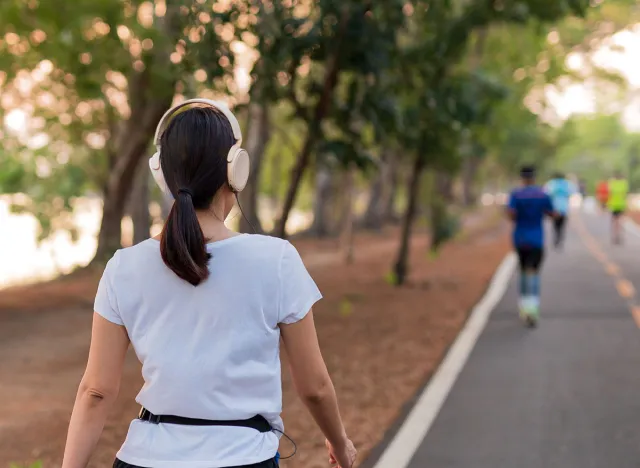
"Or you can just aim to go for a walk every single day, and that will really, really help. Any activity, any extra walking or activity, will help you burn calories and help you get into a calorie deficit, which will help you lose weight," Louise explains. "That's the secret. Just move your body more. So what you can do is just make sure that you're going for a 20 to 30-minute walk at least every single day. If you can't manage a 20 to 30-minute walk, start off with five, 10 minutes, whatever you can do, start off with that and just gradually increase it. If you can't do a 30-minute walk, you can split your walks up into free 10-minute walks a day. You can go for a walk in the morning and then in the afternoon go for a 10-minute walk and then a 10-minute walk in the evening. It does not matter when you go for a walk."
Tip 5: Walk After a Meal
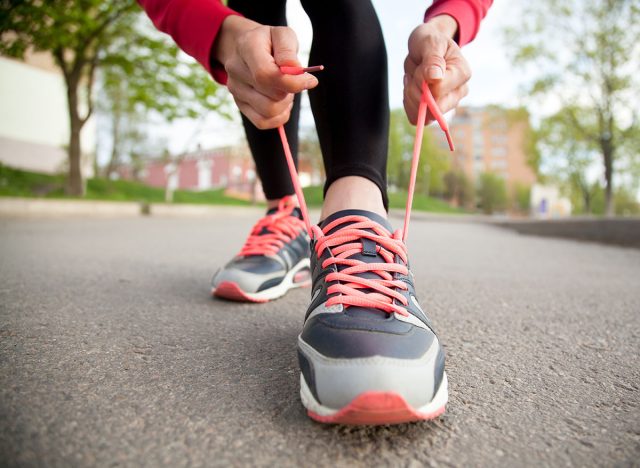
"Some people say that you should walk fast or walk after a meal. It doesn't matter. It still burns calories. But walking after you've eaten a meal really does help with digestion. So that is something you might wanna consider," Louise says. However, "it doesn't matter in terms of burning calories, burning fat," she adds. "Just move your body and walk."
Tip 6: Take the Stairs
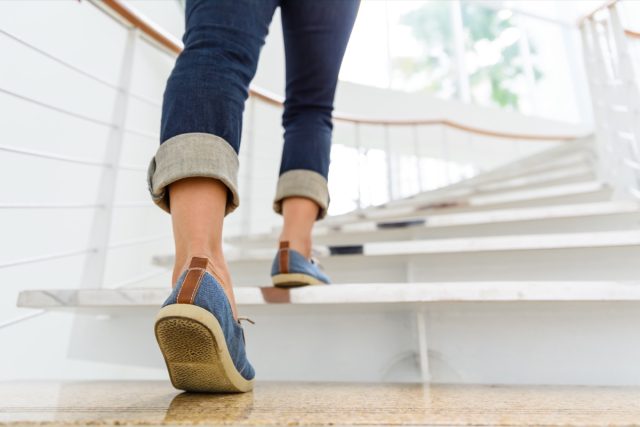
"Another tip is to just move your body more," says Louise. For example, take the stairs instead of the elevator. "Park further away. Walk to the shops instead of driving your car. Use your car as little as possible."
RELATED: 10 Best High-Protein Foods for Weight Loss
Tip 7: Walk When You Are Stressed

Walking is "a great stress relief" and "helps you manage mental health," says Louise. If you're stressed, "go for a walk," she says. "When in doubt, walk."
Tip 8: Walk with Others or Your Pets
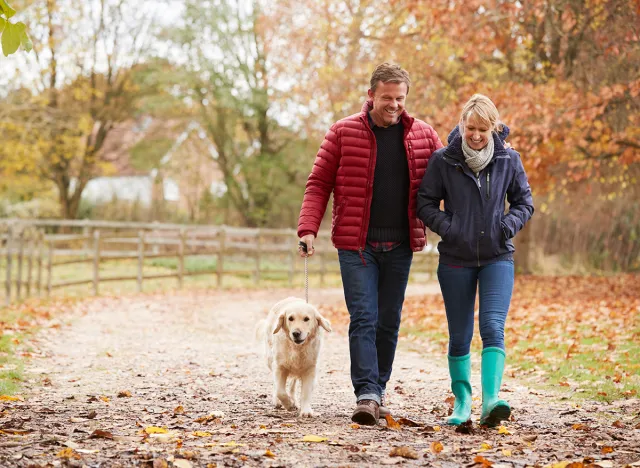
Louise also recommends making walking a group activity. "Anyone can go and walk. If you've got a dog, go take them for the most walks they've ever been on in their life. Daily walks every single day. Your dog will love you even more for it, I promise," she says. "You got kids, take them out to the park, go for walks. Get the whole family healthy."
Tip 9: Eat in a Calorie Deficit
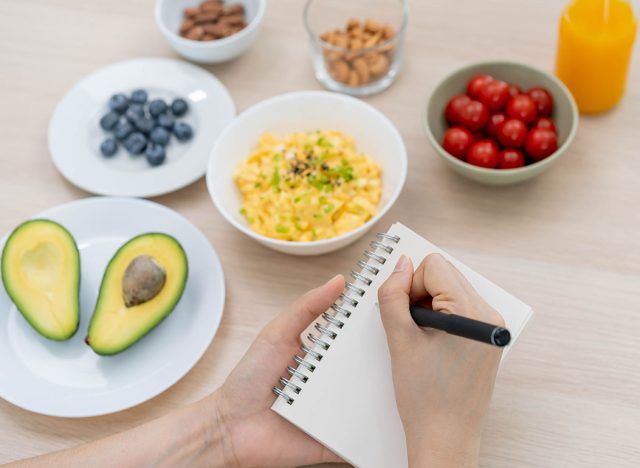
Next, "eat in a calorie deficit, eat healthy, eat balanced," Louise says. "Don't cut anything out. Moderation is key."
RELATED: I Dropped 6 Dress Sizes in a Year by Making These Simple Changes
There Is Evidence Backing Up Her Claims
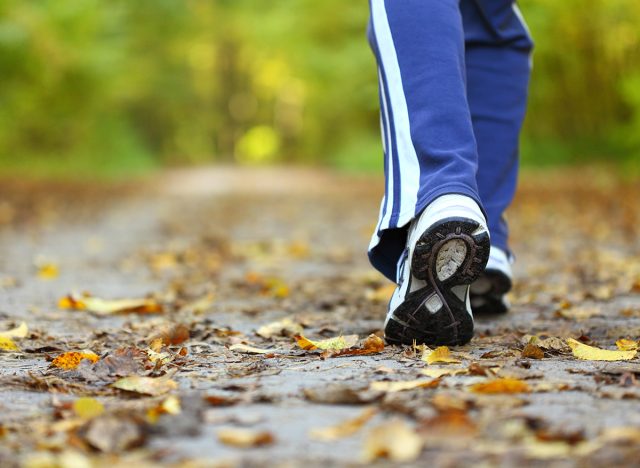
There is a lot of scientific evidence supporting Louise's claims. A 2018 study published in the journal Obesity found a link between walking 10,000 steps a day and weight loss and weight management. Other studies published by the Journal of American Medical Association (JAMA) in JAMA Neurology and in JAMA Internal Medicine also linked walking 10,000 steps a day to less dementia and less cardiovascular disease overall, with less heart disease, less heart failure and fewer strokes. As for walking on an incline, it burns more calories than walking fast or even running on a flat surface, which is why many experts suggest upping your incline. A 2013 study even found that walkin on a 2 to 7 percent incline increased heart rate by almost 10 percent when compared with running on a flat surface. social media. And if you enjoyed this article, don't miss 12-3-30 Walking Method: 20 Proven Tips to Lose Weight Faster.
